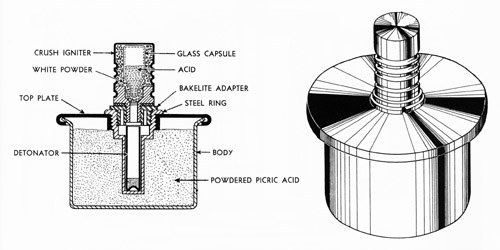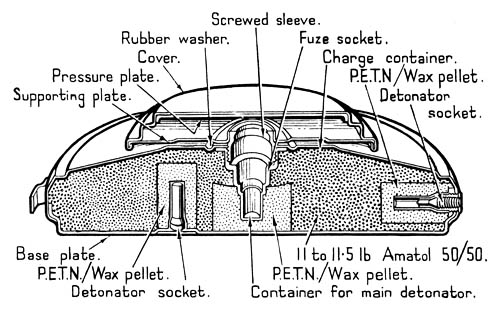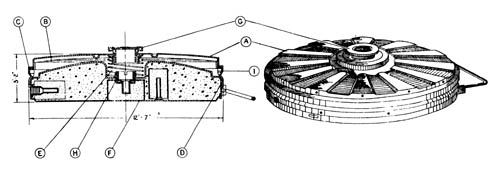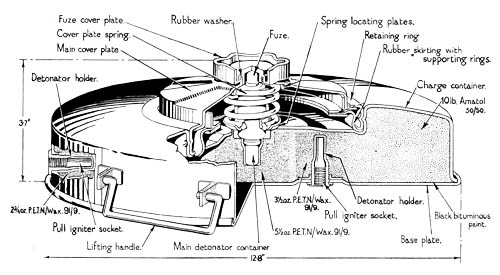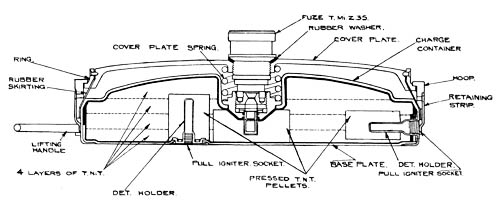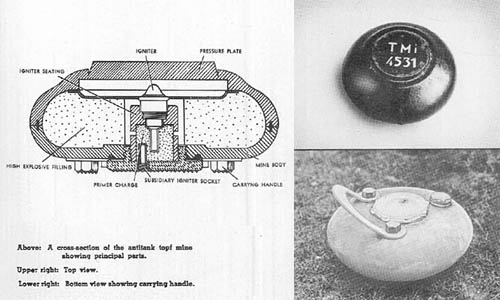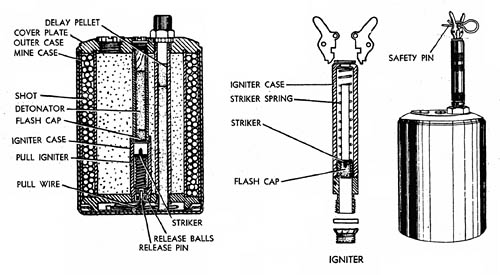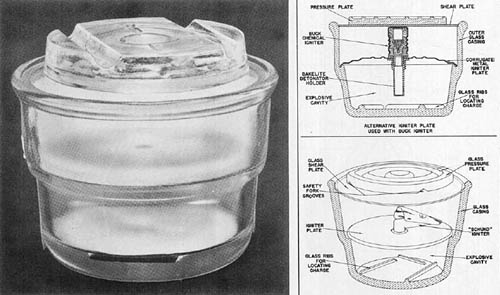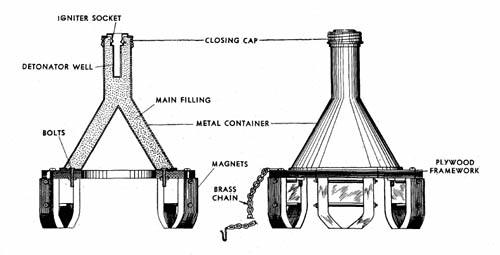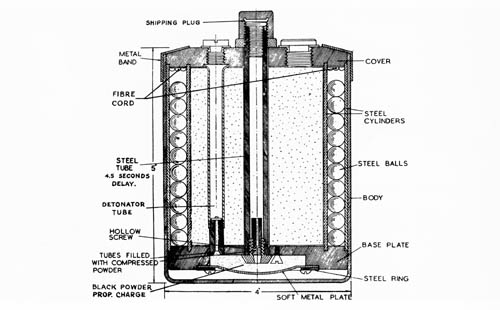
The German shrapnel mine is an antipersonnel device which may be operated by direct pressure of about 15 pounds on a push igniter in the head, or by a pull on one or more trip-wires attached to pull-igniters. It may also be fired by electrical methods.
The mine is cylindrical in shape; its height is 5 inches, its diameter is 4 inches, and it weighs approximately 91/2 pounds. It contains an explosive charge of about 8 ounces in some models and 1 pound in others, and approximately 350 steel balls.
An inner cylinder of pressed steel is fitted into the outer jacket, resting on a metal disk which is fixed to the bottom of the outer cover. The charge is contained in a movable cylinder which is screwed to the disk in the bottom of the mine. This cylinder has a central tube and three other parallel tubes. A train of powder in the bottom of the central tube, 2 grams of powder in a recess under the movable cylinder, and the shrapnel, which is contained in the space between the inner jacket and the movable cylinder, complete the assembly.
A cover plate is attached to the mine. This plate has an opening through which the central tube passes, and three other openings in alinement with the three parallel tubes in the powder container.
For firing, an igniter is screwed to the central tube, and a detonator is inserted (sometimes two) in each one of the three other tubes. When the igniter fires, the flame produced flashes down the center tube, setting off the small powder charge which throws the inner cylinder into the air. At the same time, the detonators are ignited, and they in turn set off the main charge. The delay in detonation of this charge permits the casing to rise from 6 to 7 feet into the air before exploding. The shrapnel filling is effective up to a range of about 150 yards to 200 yards.
SPECIFICATIONS
| Height (without igniter) | 5 ins. | |
| Weight of mine (approximate) | 9 1/2 lb. | |
| Weight of filling (approximate) TNT | 8 oz. to 1 lb. | |
| Type of filling | TNT and PETN | |
| Diameter of mine | 4 ins. | |
| Diameter of steel balls | .372 in. | |
| Mine wall thickness | .050 in. | |
| Weight of 350 steel balls | 2 lb., 10.67 oz. | |
| Black powder propellant | 0.15 oz. | |
| Explosive carton complete | 1 lb., 0.14 oz. | |
| Three types of igniters are used: | ||
| Pressure type | ||
| “Y” adapter w/2 pull igniters | ||
| Electric squib type | ||
German: p. 305
